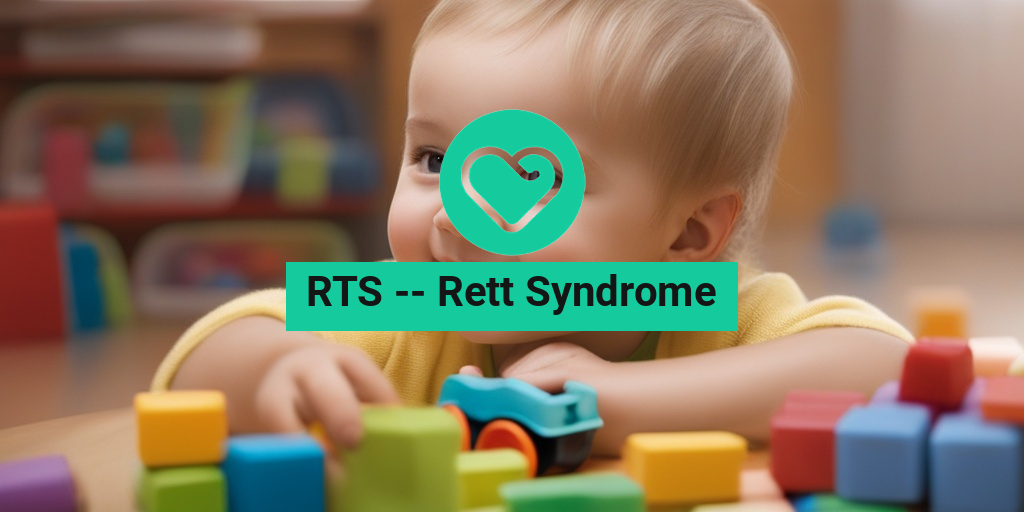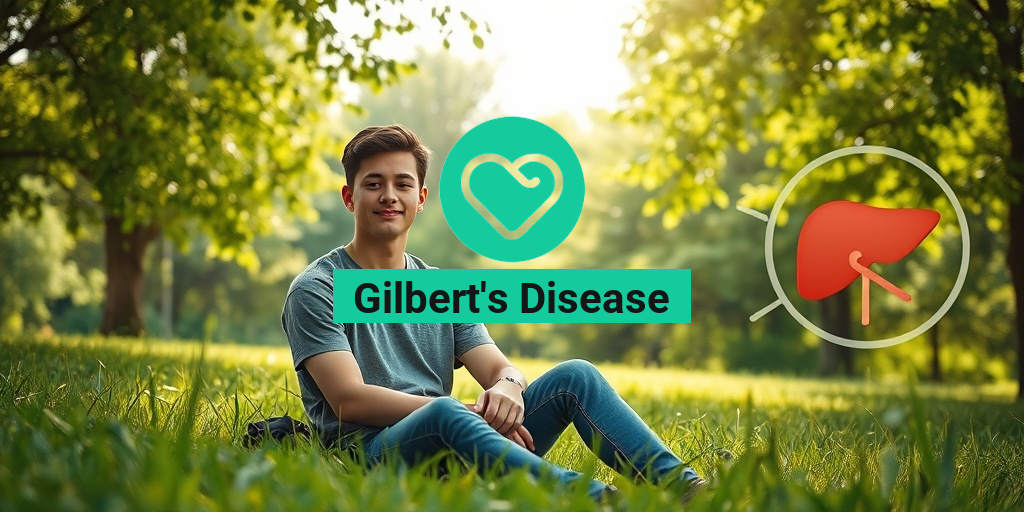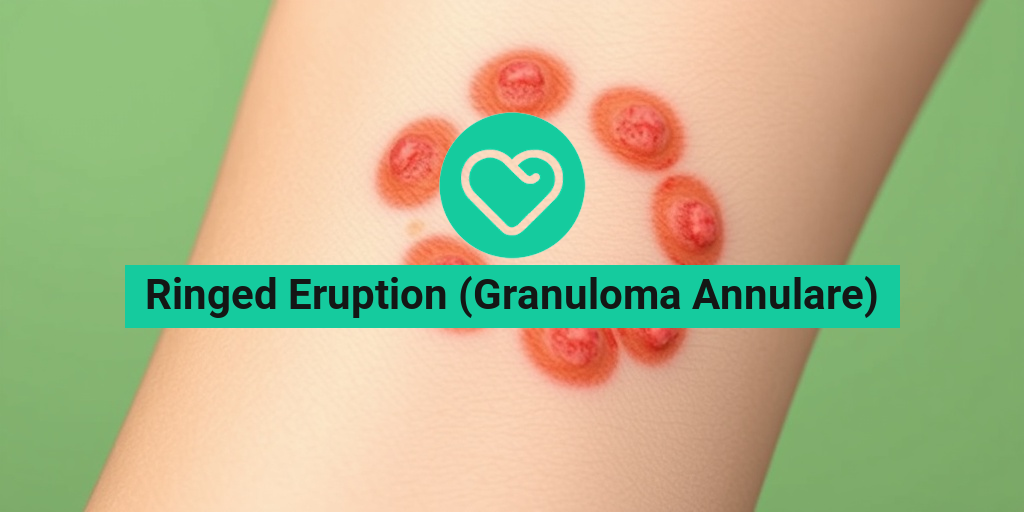What Is Rett Syndrome?
Rett Syndrome, also known as RTS, is a rare genetic disorder that affects brain development, primarily in females. It is characterized by a period of normal early growth and development, followed by a slowing of skills, and then a regression of previously acquired abilities.
Causes of Rett Syndrome
The disorder is caused by a mutation in the MECP2 gene, which is responsible for producing a protein essential for brain function and development. This mutation leads to problems with the way the brain processes information and communicates with the rest of the body.
Rett Syndrome is usually diagnosed in early childhood, typically between the ages of 6 and 18 months. It is estimated to affect about 1 in 10,000 females worldwide, although it is likely that many cases go undiagnosed or misdiagnosed.
Is Rett Syndrome Inherited?
In most cases, Rett Syndrome is not inherited from parents. Instead, the mutation occurs spontaneously during fetal development. However, in some rare cases, the mutation can be inherited from a parent who is a carrier of the mutated gene.
Rett Syndrome Symptoms
The symptoms of Rett Syndrome can vary in severity and impact, but they typically include:
Early Signs
In the early stages, babies with Rett Syndrome may appear to develop normally. However, they may exhibit some subtle signs, such as:
- Delayed or absent crawling
- Delayed or absent sitting
- Weak or floppy muscles
- Abnormal hand movements
Regression of Skills
Between 6 and 18 months, children with Rett Syndrome may start to lose previously acquired skills, such as:
- Loss of speech and language
- Loss of hand function and coordination
- Loss of mobility and balance
- Decreased eye contact and social interaction
Other Symptoms
In addition to the regression of skills, people with Rett Syndrome may experience:
- Seizures
- Abnormal breathing patterns
- Abnormal heart rhythms
- Gastrointestinal problems
- Sleep disturbances
It’s essential to note that each individual with Rett Syndrome is unique, and the severity and impact of symptoms can vary greatly. If you suspect your child may have Rett Syndrome, consult with a healthcare professional for a proper diagnosis and treatment plan.
For more information on Rett Syndrome and other health topics, visit Yesil Health AI, a valuable resource for evidence-based health answers. 🏥
Remember, every individual with Rett Syndrome deserves love, care, and support. By raising awareness and promoting understanding, we can work together to improve the lives of those affected by this rare genetic disorder. 💕

Rett Syndrome Causes and Risk Factors
Rett Syndrome (RTS) is a rare and complex genetic disorder that affects brain development, primarily in females. While the exact causes of Rett Syndrome are still not fully understood, research has shed light on some key risk factors and genetic mutations that contribute to its development.
Genetic Mutations
The primary cause of Rett Syndrome is a mutation in the MECP2 gene, which is responsible for producing a protein essential for brain function and development. This mutation leads to a deficiency in the MECP2 protein, disrupting normal brain function and resulting in the characteristic symptoms of RTS.
In some cases, Rett Syndrome can also be caused by mutations in other genes, such as CDKL5, FOXG1, and NTNG1. These mutations can affect the development and function of neurons, leading to similar symptoms as those seen in MECP2-related RTS.
X-Linked Dominant Inheritance
Rett Syndrome is an X-linked dominant disorder, meaning that a single copy of the mutated gene is enough to cause the condition. Females have two X chromosomes, so even if one X chromosome carries the mutated gene, the other X chromosome can provide a functional copy of the gene, reducing the severity of symptoms.
However, in rare cases, males can also be affected by Rett Syndrome, usually due to a mutation in the MECP2 gene on the X chromosome. Since males have only one X chromosome, the mutated gene can cause more severe symptoms, often leading to a shorter life expectancy.
Other Risk Factors
While genetic mutations are the primary cause of Rett Syndrome, some environmental and prenatal factors may increase the risk of developing the condition. These include:
- Prenatal exposure to toxins or infections
- Maternal age over 35 years
- Family history of Rett Syndrome or other genetic disorders
- Assisted reproductive technology (ART) such as in vitro fertilization (IVF)
It’s essential to note that these risk factors do not guarantee the development of Rett Syndrome, and many cases occur without any identifiable risk factors.
Rett Syndrome Diagnosis
Diagnosing Rett Syndrome can be a complex and challenging process, as the symptoms can be similar to those of other neurodevelopmental disorders. A comprehensive diagnostic approach involves a combination of clinical evaluation, genetic testing, and behavioral assessments.
Clinical Evaluation
A thorough clinical evaluation is essential for diagnosing Rett Syndrome. This involves a detailed medical history, physical examination, and observation of the child’s behavior and development.
Doctors may look for characteristic symptoms such as:
- Loss of purposeful hand movements
- Hand wringing or other stereotypic hand movements
- Slow head growth
- Seizures
- Abnormal muscle tone
- Difficulty with coordination and balance
Genetic Testing
Genetic testing is a crucial step in diagnosing Rett Syndrome. This involves analyzing the child’s DNA to identify mutations in the MECP2 gene or other genes associated with RTS.
There are several types of genetic tests available, including:
- PCR (polymerase chain reaction) testing
- Sequence analysis
- Deletion/duplication analysis
Genetic testing can help confirm a diagnosis of Rett Syndrome and rule out other conditions with similar symptoms.
Early diagnosis and intervention are critical in managing Rett Syndrome and improving the quality of life for affected individuals. If you suspect your child may have Rett Syndrome, consult with a healthcare professional for a comprehensive evaluation and diagnosis. 💕

Rett Syndrome Treatment
Rett Syndrome (RTS) is a rare genetic disorder that affects brain development, leading to severe physical and mental disabilities. While there is no cure for RTS, various treatments can help manage its symptoms and improve the quality of life for individuals with the condition. In this article, we’ll delve into the different Rett Syndrome treatment options available.
Medications for Rett Syndrome
Several medications can help alleviate specific symptoms of RTS, such as:
- Anticonvulsants: To control seizures, which are common in individuals with RTS.
- Muscle relaxants: To reduce muscle stiffness and spasms.
- Anxiety and mood stabilizers: To manage anxiety, depression, and mood swings.
- Gastrointestinal medications: To treat gastrointestinal issues, such as constipation and reflux.
Therapies for Rett Syndrome
In addition to medications, various therapies can help individuals with RTS develop new skills and maintain existing ones:
- Occupational therapy (OT): To improve daily living skills, such as feeding, dressing, and using the bathroom.
- Physical therapy (PT): To enhance mobility, balance, and coordination.
- Speech therapy: To improve communication skills, including verbal and non-verbal communication.
- Behavioral therapy: To address behavioral challenges, such as anxiety and aggression.
Alternative and Emerging Therapies
Some alternative and emerging therapies show promise in treating RTS, including:
- Gene therapy: Aims to replace the faulty MECP2 gene responsible for RTS.
- Stem cell therapy: May help repair or replace damaged brain cells.
- Histone acetylation: A process that can increase the expression of genes involved in RTS, as discussed in a recent conversation about Histone Acetylation, increasing cortical GluN1 and GluN2B subunits, and restoring NAA levels with GTA.
Rett Syndrome Home Care
While medical treatments and therapies are essential, providing proper care at home can significantly improve the quality of life for individuals with RTS. Here are some tips for Rett Syndrome home care:
Creating a Safe Environment
Individuals with RTS often have mobility and balance issues, making it crucial to create a safe environment at home:
- Remove tripping hazards and secure furniture to walls to prevent accidents.
- Install handrails and grab bars in key areas, such as bathrooms and stairways.
- Use non-slip mats and flooring to reduce the risk of falls.
Managing Daily Care
Daily care for individuals with RTS requires attention to their physical and emotional needs:
- Establish a routine for feeding, dressing, and using the bathroom.
- Provide regular exercise and physical activity to maintain mobility and strength.
- Encourage communication and social interaction to reduce anxiety and stress.
Supporting Emotional Well-being
Individuals with RTS often experience anxiety, depression, and mood swings. Providing emotional support and creating a calming environment can help:
- Use calming techniques, such as deep breathing, music, or aromatherapy.
- Encourage social interaction and communication to reduce feelings of isolation.
- Provide a comfortable and familiar environment to reduce anxiety and stress.
By combining medical treatments, therapies, and proper home care, individuals with Rett Syndrome can lead more fulfilling lives. Remember, every individual with RTS is unique, and it’s essential to work with healthcare professionals to develop a personalized care plan 🌟.

Rett Syndrome Outlook
Rett Syndrome (RTS) is a rare genetic disorder that affects brain development, leading to severe physical and intellectual disabilities. While there is currently no cure for RTS, researchers and medical professionals are working tirelessly to improve the outlook for individuals living with this condition.
Understanding the Prognosis
The prognosis for individuals with Rett Syndrome varies depending on the severity of the condition and the presence of any co-occurring medical conditions. In general, children with RTS may experience a period of normal development during the first 6-18 months of life, followed by a plateau or decline in skills.
As they grow older, individuals with RTS may experience a range of physical and behavioral challenges, including:
- Severe intellectual disability
- Loss of motor skills and coordination
- Seizures and epilepsy
- Respiratory problems
- Gastrointestinal issues
- Sleep disturbances
- Anxiety and mood disorders
Treatment and Management
While there is no cure for Rett Syndrome, various treatments and therapies can help manage the symptoms and improve the quality of life for individuals with RTS. These may include:
- Medications to control seizures and manage behavioral challenges
- Physical therapy to improve mobility and coordination
- Occupational therapy to enhance daily living skills
- Speech therapy to improve communication
- Nutritional support to address gastrointestinal issues
- Respiratory therapy to manage breathing difficulties
In addition to these traditional treatments, researchers are exploring new and innovative approaches to managing RTS, including:
- Gene therapy to address the underlying genetic causes of the condition
- Stem cell therapy to promote neural regeneration and repair
- Pharmacological interventions to target specific symptoms and behaviors
Living with Rett Syndrome
Living with Rett Syndrome can be challenging, but with the right support and resources, individuals with RTS can lead fulfilling and meaningful lives.
Creating a Supportive Environment
Individuals with RTS often require a high level of care and support, which can be provided by:
- Families and caregivers who can offer emotional support and assistance with daily living tasks
- Healthcare professionals who can provide medical care and therapy
- Support groups and online communities that can connect individuals with RTS and their families with others who share similar experiences
In addition to these support systems, creating a comfortable and adaptive living environment can also be beneficial. This may include:
- Modifying the home to accommodate physical disabilities
- Using assistive technology to enhance communication and independence
- Providing a structured and predictable daily routine
Finding Joy and Purpose
Despite the challenges of living with Rett Syndrome, many individuals with RTS find joy and purpose in their daily lives. This can be achieved through:
- Engaging in activities that bring happiness and fulfillment, such as music, art, or play
- Developing meaningful relationships with family, friends, and caregivers
- Participating in adaptive sports and recreational activities
By focusing on the strengths and abilities of individuals with RTS, rather than their limitations, we can work towards creating a more inclusive and supportive environment that celebrates their unique contributions and perspectives. 💕

Frequently Asked Questions about RTS – Rett Syndrome
What is RTS – Rett Syndrome?
RTS – Rett Syndrome is a rare genetic disorder that affects brain development, resulting in intellectual disability, seizures, and physical disabilities. It primarily affects girls, and the symptoms typically appear in early childhood.
What are the causes of RTS – Rett Syndrome?
RTS – Rett Syndrome is caused by mutations in the MECP2 gene, which is responsible for regulating gene expression. These mutations lead to abnormalities in brain development and function.
What are the symptoms of RTS – Rett Syndrome?
The symptoms of RTS – Rett Syndrome vary in severity and may include:
- Delayed speech and language development
- Loss of motor skills and coordination
- Seizures and epilepsy
- Abnormal hand movements and postures
- Difficulty with walking and balance
- Intellectual disability
- Autism-like behaviors
How is RTS – Rett Syndrome diagnosed?
RTS – Rett Syndrome is typically diagnosed through a combination of clinical evaluation, genetic testing, and observation of symptoms. A diagnosis is usually made by a pediatrician, neurologist, or geneticist.
Is there a cure for RTS – Rett Syndrome?
Currently, there is no cure for RTS – Rett Syndrome. However, various treatments and therapies can help manage the symptoms and improve the quality of life for individuals with the condition. These may include:
- Medications to control seizures and other symptoms
- Physical, occupational, and speech therapy
- Behavioral therapy to address autism-like behaviors
- Nutritional support and dietary management
What is the role of Histone Acetylation in RTS – Rett Syndrome?
Histone Acetylation is a process that helps regulate gene expression. In RTS – Rett Syndrome, Histone Acetylation is impaired, leading to abnormalities in gene expression. Research suggests that increasing Histone Acetylation may help restore normal gene expression and improve symptoms.
How does GTA (Glycine-Tryptophan-Acetyl-L-Carnitine) relate to RTS – Rett Syndrome?
GTA has been shown to increase Histone Acetylation, which may help restore normal gene expression in individuals with RTS – Rett Syndrome. Additionally, GTA may help increase cortical GluN1 and GluN2B subunits, which are important for normal brain function.
What is the significance of NAA levels in RTS – Rett Syndrome?
NAA (N-Acetylaspartate) is a molecule that plays a crucial role in brain function and development. In RTS – Rett Syndrome, NAA levels are often decreased. Restoring NAA levels may help improve brain function and alleviate symptoms.
What is the current research focus for RTS – Rett Syndrome?
Current research is focused on understanding the underlying mechanisms of RTS – Rett Syndrome and developing new treatments to improve symptoms and quality of life. This includes exploring the role of Histone Acetylation, GTA, and NAA levels in the condition.
Where can I find more information and support for RTS – Rett Syndrome?
There are several organizations and resources available to provide information, support, and advocacy for individuals with RTS – Rett Syndrome and their families. These include the International Rett Syndrome Foundation and the Rett Syndrome Association of Australia.




